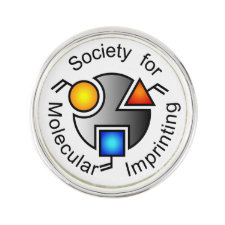
Authors: Yoshikawa M, Guiver MD, Robertson GP
Article Title: Molecularly imprinted films derived from Torlon[trademark] polyamide-imide.
Publication date: 2005
Journal: Journal of Molecular Structure
Volume: 739
Issue: (1-3)
Page numbers: 41-46.
DOI: 10.1016/j.molstruc.2004.04.031
Abstract: Novel molecular recognition materials were prepared from commercially available Torlon[trademark] 4000T polyamide-imide by an alternative molecular imprinting. Torlon[trademark] 4000T was converted into the molecularly imprinted film adopting 9-ethyladenine as a print molecule, whereby the adenosine recognition site was formed. The molecular recognition phenomena were studied by SPR spectroscopy. The apparent affinity constant toward adenosine, estimated by using apparent adsorption isotherms, ranged from 2.73X104 to 7.86X104 mol-1 dm3. The present work demonstrates that SPR spectroscopy is a facile method for the study of molecularly imprinted materials. The results obtained in the present study also suggest that Torlon[trademark] 4000T is one of the more highly effective candidate materials to be converted into molecular recognition materials by applying an alternative molecular imprinting
Template and target information: 9-ethyladenine, 9-EA
Author keywords: adenosine, 9-ethyladenine, guanosine, molecular imprinting, molecular recognition, optical resolution, Polyamide-imide, surface plasmon resonance (SPR)



Join the Society for Molecular Imprinting

New items RSS feed
Sign-up for e-mail updates:
Choose between receiving an occasional newsletter or more frequent e-mail alerts.
Click here to go to the sign-up page.
Is your name elemental or peptidic? Enter your name and find out by clicking either of the buttons below!
Other products you may like:
 MIPdatabase
MIPdatabase









